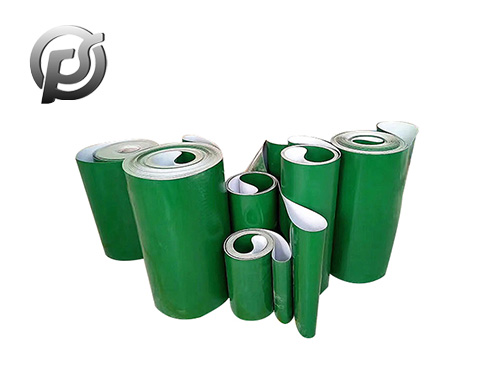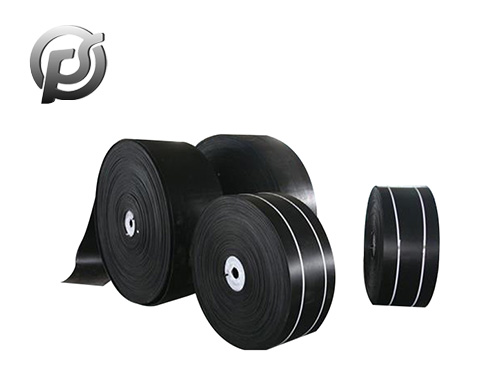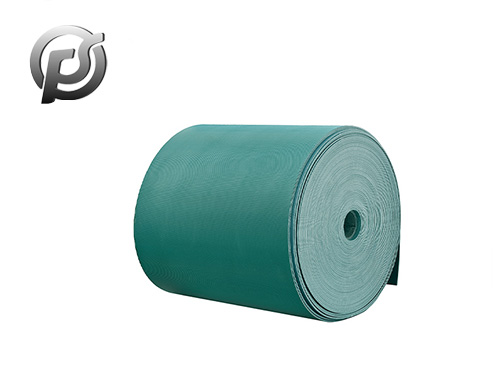Conveyor belt storage types and levels to points pile up, placed above the ground high above 30 centimeters, more than 50 cm from the wall plank, stacking height is 4 to 6 layers, long pile of unlimited, between pile of conveyor belt of the left channel, in order to remove and transport (carriage), warehouse stacking gel packs, well ventilated, dry, clean, no leak, the warehouse temperature is not It should exceed 35℃ and keep the relative humidity as low as possible. According to the internal structure, the steel wire rope lifting belt can be divided into: ordinary structure type, transverse enhancement type, embedded coil tear prevention type. In addition, the rubber conveyor belt should not be exposed to direct sunlight, contact with copper (chemical type Cu), manganese and other salts or oxides, and should not be stored together with oil and flammable goods. During transportation, it should be loaded in dry and clean cars, covered with tarpaulins to prevent sun exposure or rain.
The conveyor belt will elongate in the process of use. Part of it is elastic elongation, which can be restored after the external force is withdrawn (legally cancelled). The other part is the elongation of the preparation and contraction of the skeleton material, which cannot be restored. Conveyor belt manufacturers according to the different use environment, divided into ordinary conveyor belt including (common type, heat resistant type, flame resistant type, burn resistant type, acid and alkali resistant type, oil resistant type), heat resistant conveyor belt, cold resistant conveyor belt, acid and alkali resistant conveyor belt, oil resistant conveyor belt, food conveyor belt and other models. Among them, the minimum thickness of glue covering the ordinary conveyor belt and food conveyor belt is 3.0mm, and the minimum thickness of glue covering the bottom is 1.5mm. Heat resistant conveyor belt, cold resistant conveyor belt, acid and alkali resistant conveyor belt, oil resistant conveyor belt covered with rubber minimum thickness of 4.5mm, the bottom covered with rubber minimum 2.0mm. According to the specific conditions of the use environment, the thickness of the upper and lower covering glue can be increased by 1.5mm. Steel wire rope lifting belt has high tensile strength, good impact resistance, long life, small elongation, good slotting, good flexural resistance and flexibility for long distance, large distance, high speed conveying materials. The product is made of core glue, wire rope, Cover and edge glue used fabric core conveyor belt, EP conveyor belt of elongation is small, and NN conveyor belt elongation is large, and in use process, the creep of NN conveyor belt, the nylon fibers is larger, so in the process of using, elongation ratio increase, and because of the fiber creep, so after outside force to cancel, I can go back to the amount of shrinkage that is much smaller than the elongation .
High quality white (Rubber) conveyor belt under the repeated action of mechanical stress and constant friction with the roller (which supports the conveyor belt and material weight), will make the Rubber molecular chain break to form free radicals, causing oxidation chain reaction, forming a mechanochemical process. The large inclination conveyor belt is composed of three parts: base belt, baffle and diaphragm. The baffle plays the role of preventing the material from slipping and falling. In order to make it easy to bypass the roller, the edge is designed as a corrugated shape; The role of the diaphragm is to support the material, in order to achieve a large Angle of transport, T type TC type. The baffle and diaphragm are connected with the baseband by secondary vulcanization, which has high connection strength. Mechanical chain breaking and mechanical activation oxidation process. Which one has the advantage (interpretation: the advantage of being able to overwhelm the other) depends on the conditions in which it is placed. In addition, it is easy to cause superoxide cracking under the action of stress. The role of water has two aspects: rubber in wet air rain or soaked in water, easy to destroy, this is due to the water soluble substances in rubber and water groups and other components by water extraction and dissolution. Caused by hydrolysis or absorption. Especially under the alternating effect of water immersion and atmospheric exposure, the destruction of rubber will be accelerated. However, under certain circumstances, water does not damage rubber, and even has an Ageing effect.
 Optimizing Operations with PE Conveyor Belts: Durability, Efficiency, and Versatility
Optimizing Operations with PE Conveyor Belts: Durability, Efficiency, and Versatility
 Exploring the Efficiency and Versatility of Light Conveyor Belts
Exploring the Efficiency and Versatility of Light Conveyor Belts
 Polyester Conveyor Belts: Enhancing Efficiency and Reliability in Material Handling
Polyester Conveyor Belts: Enhancing Efficiency and Reliability in Material Handling